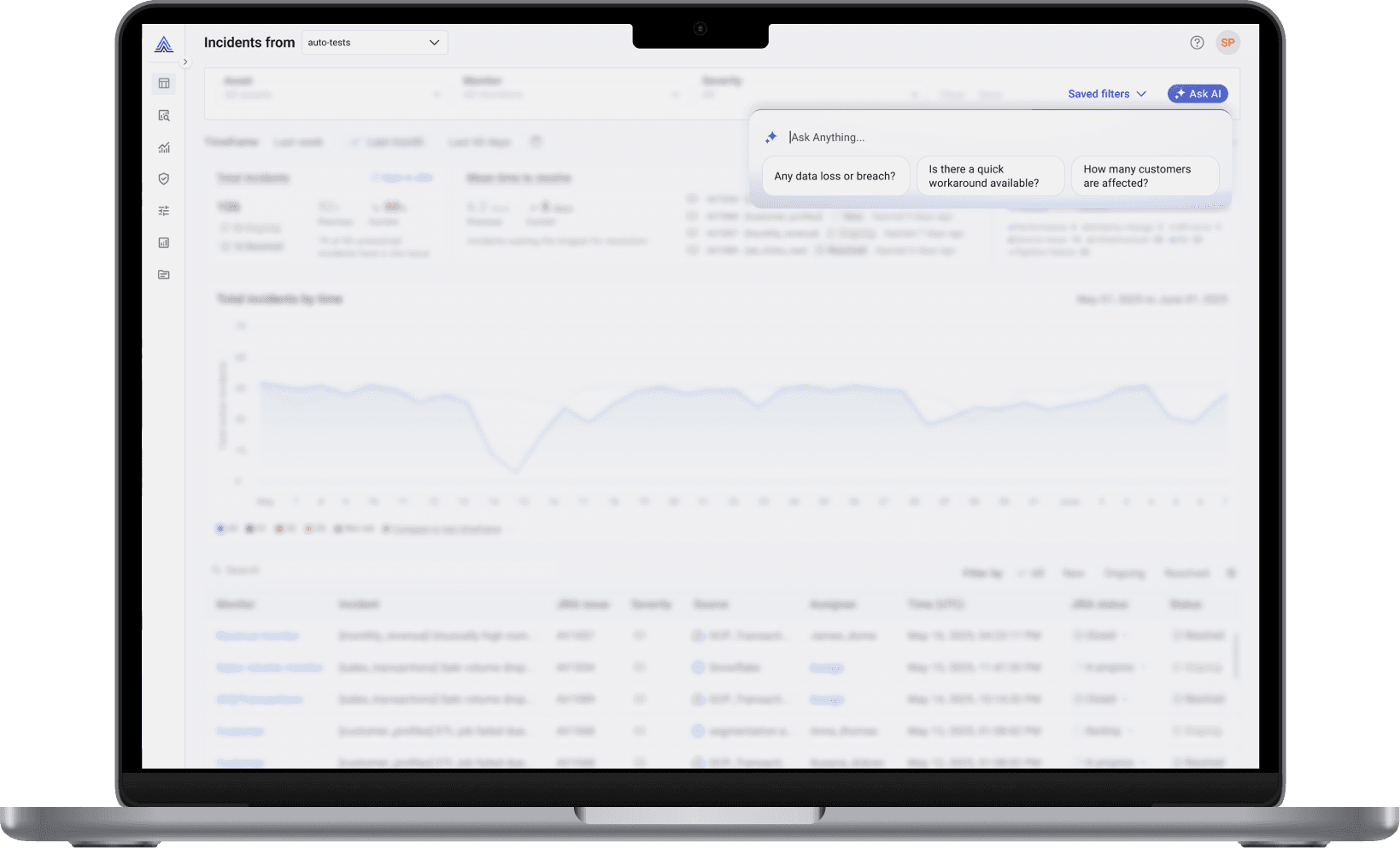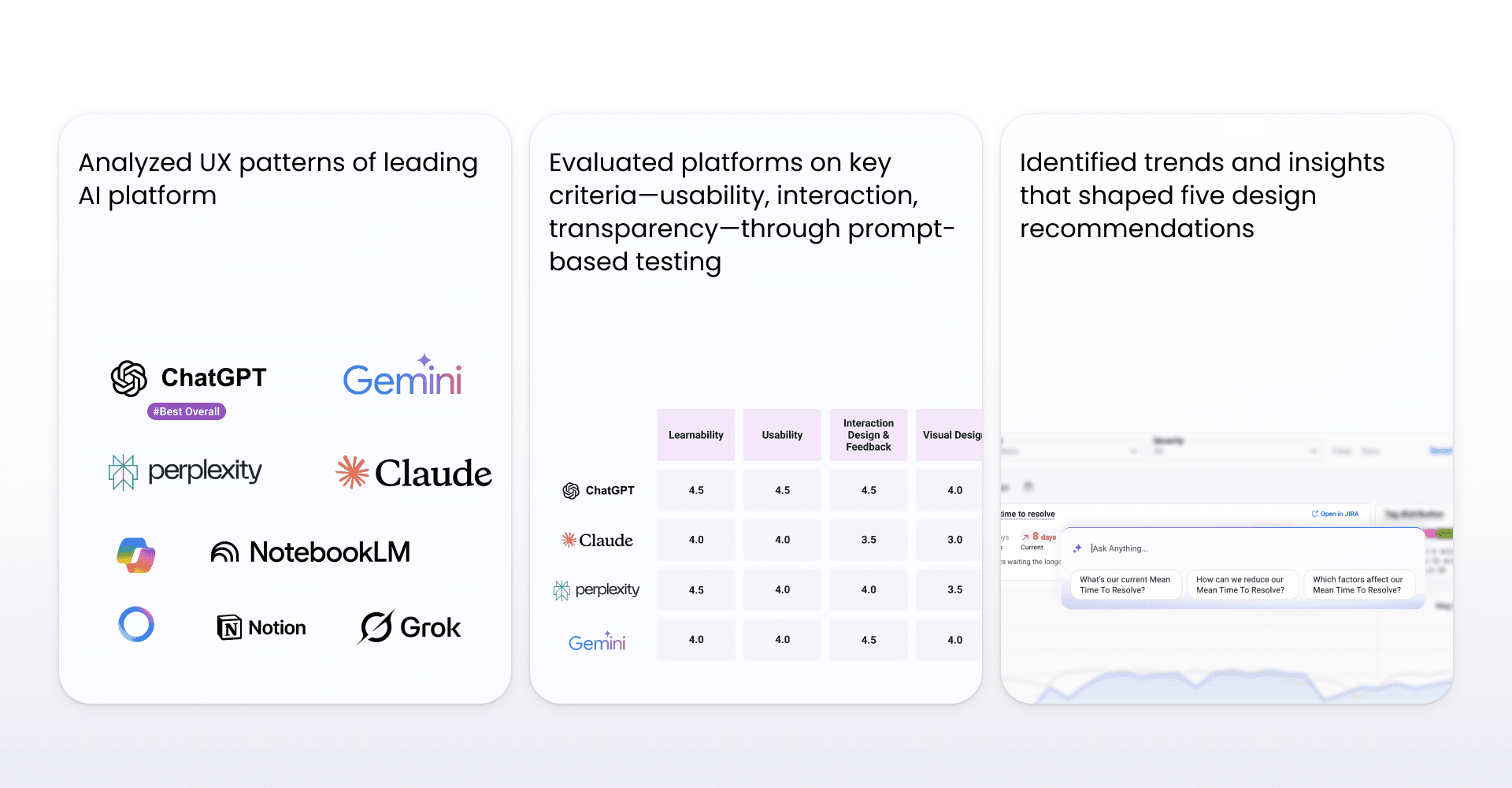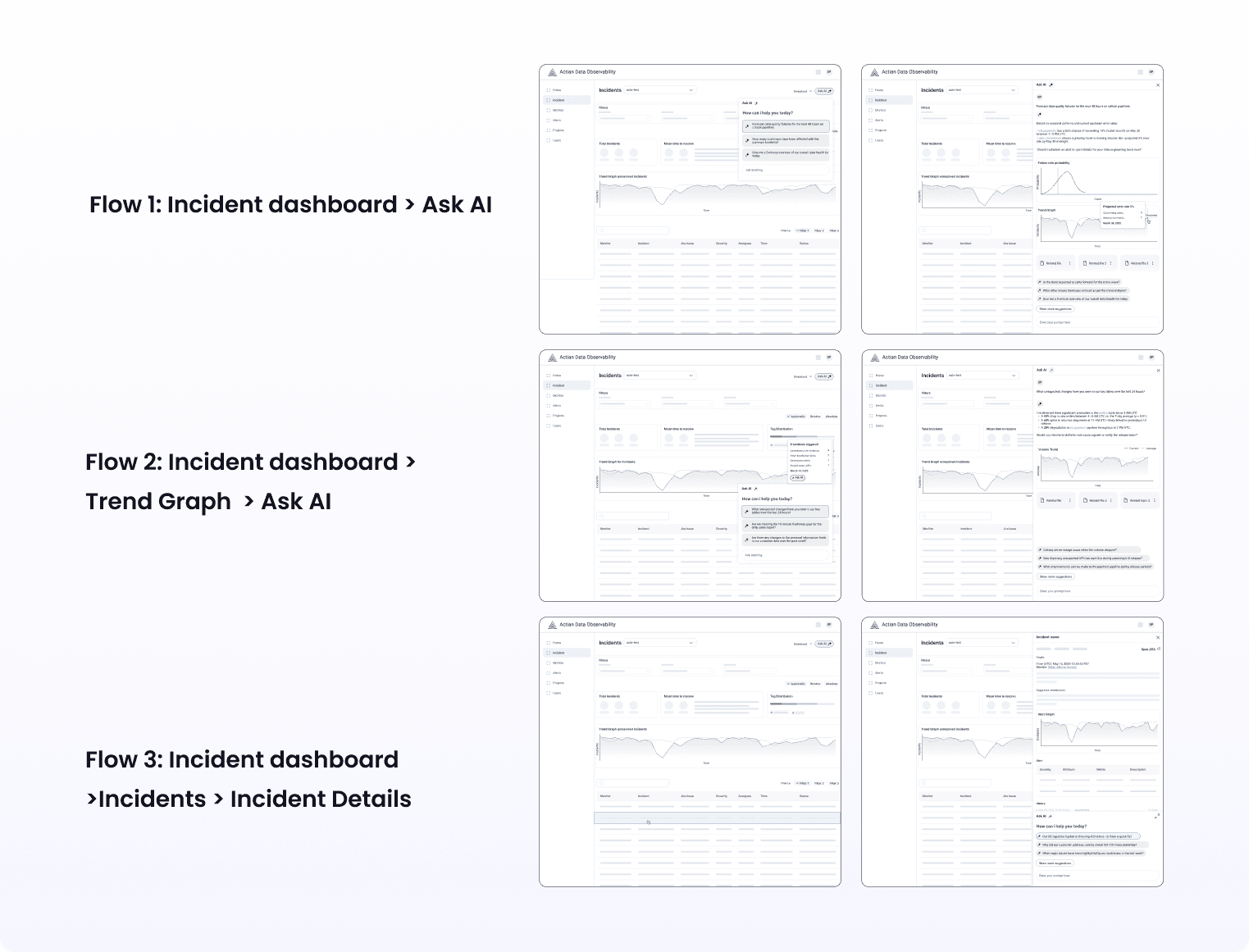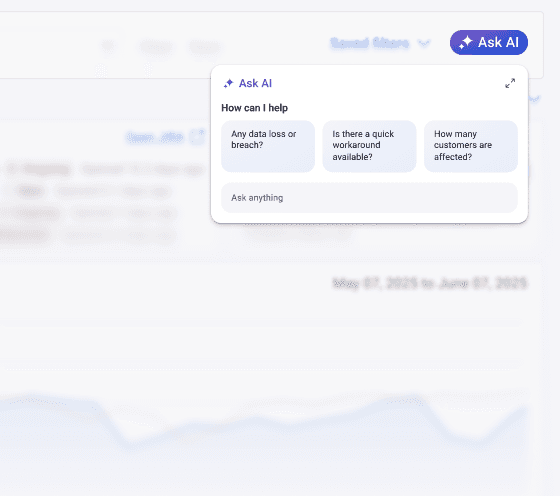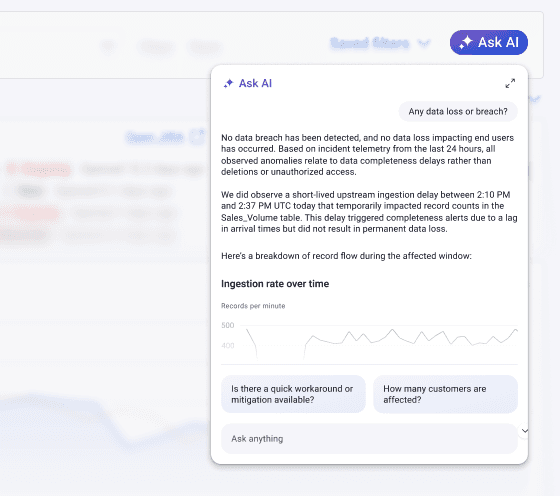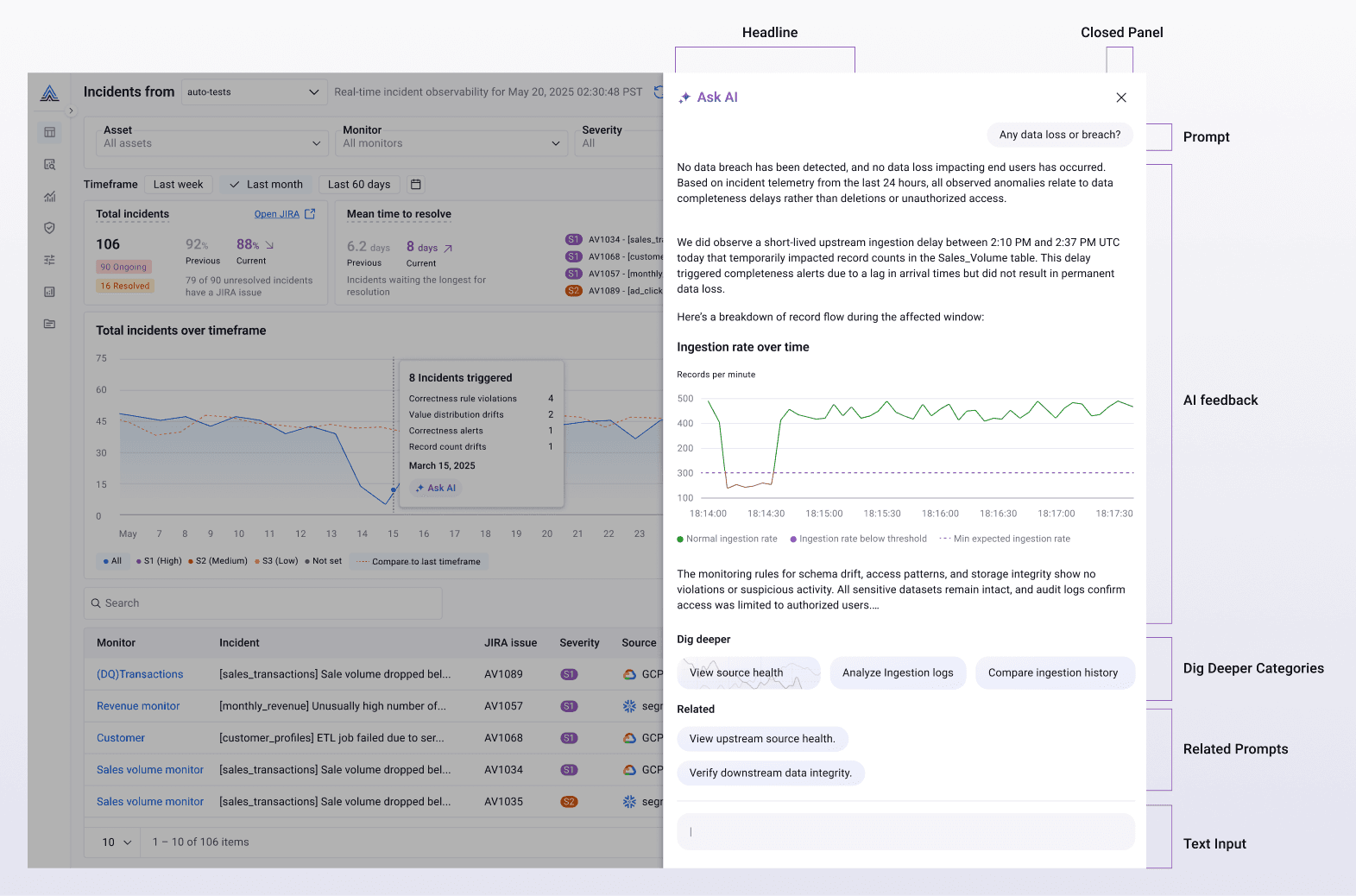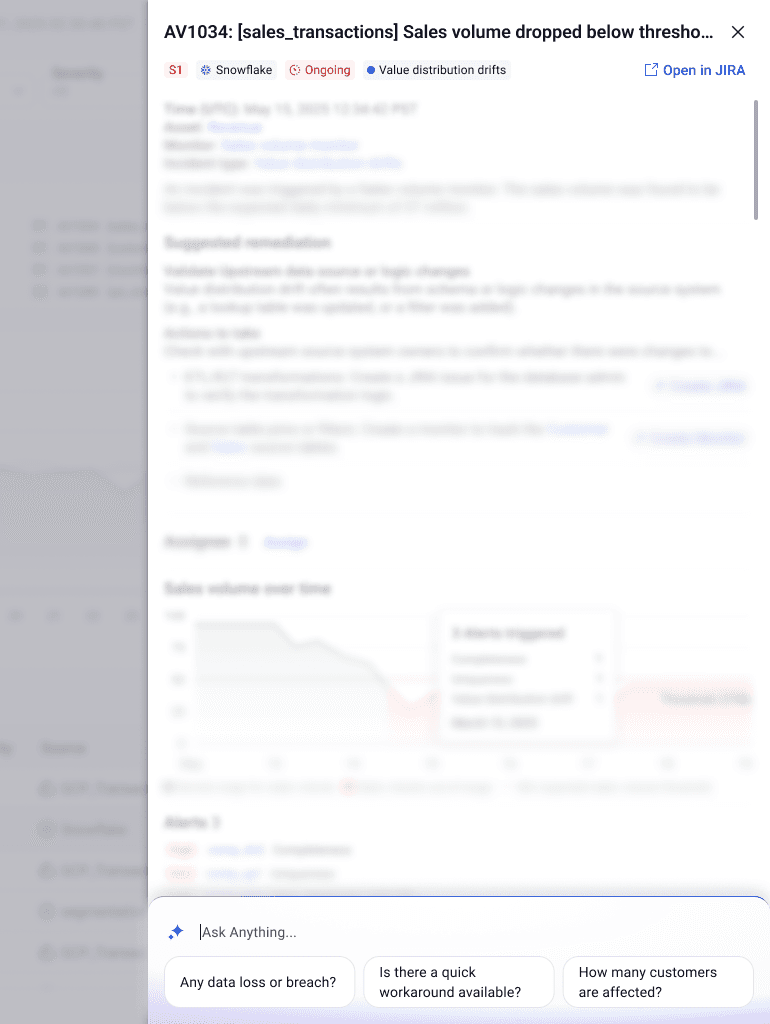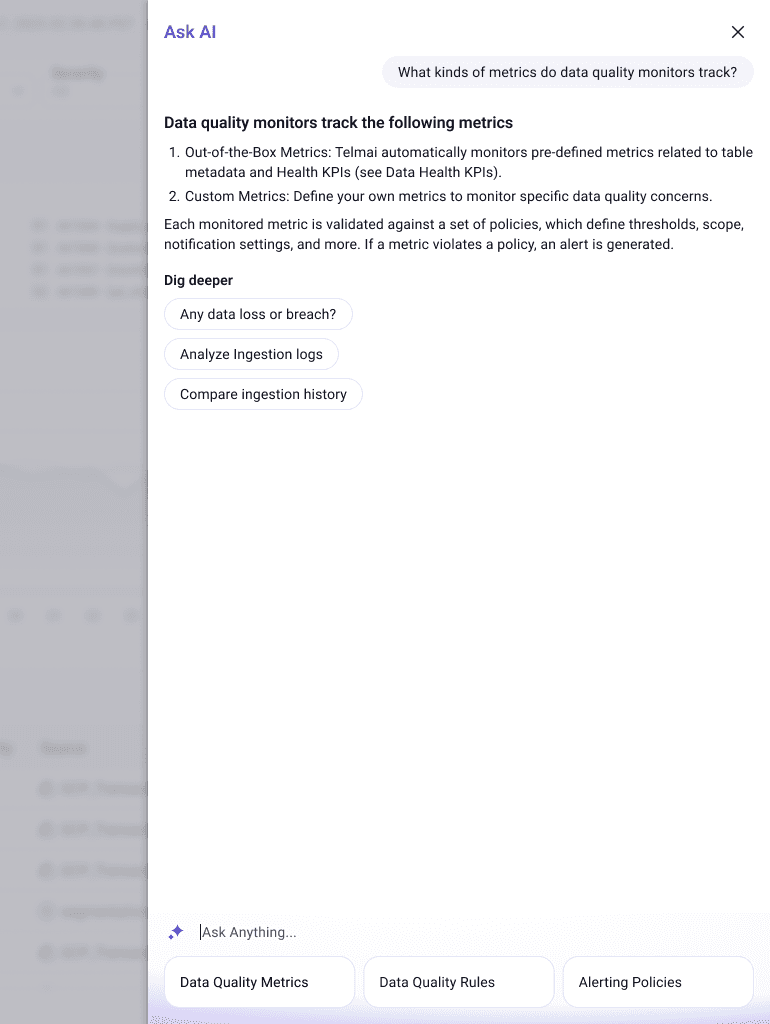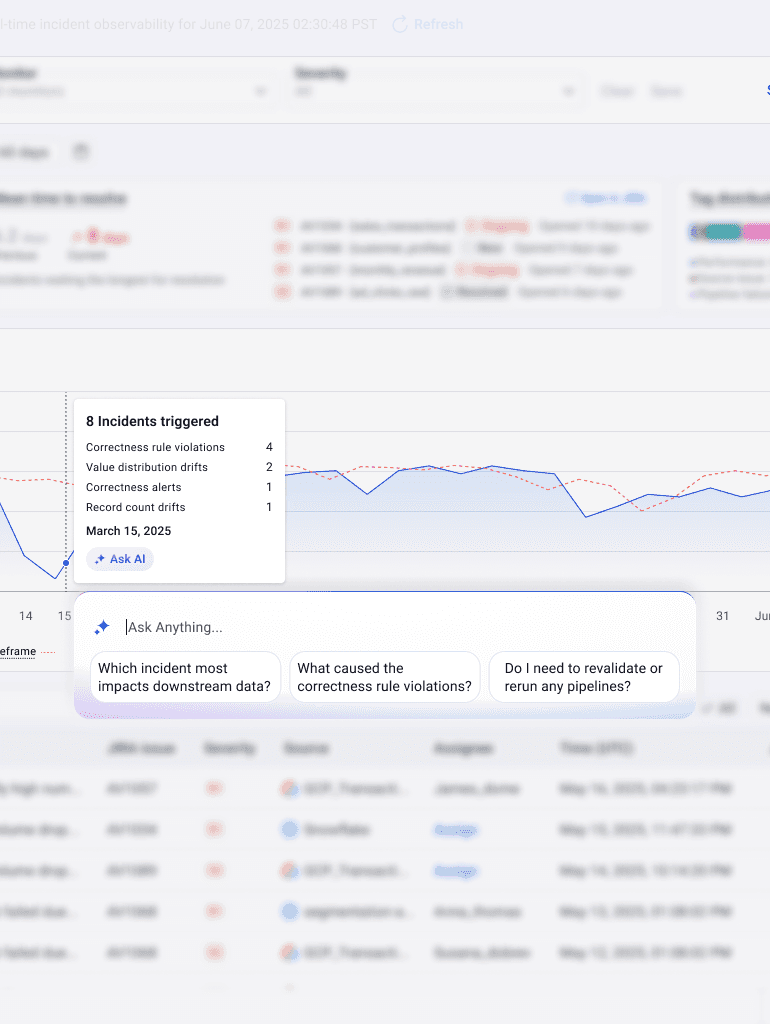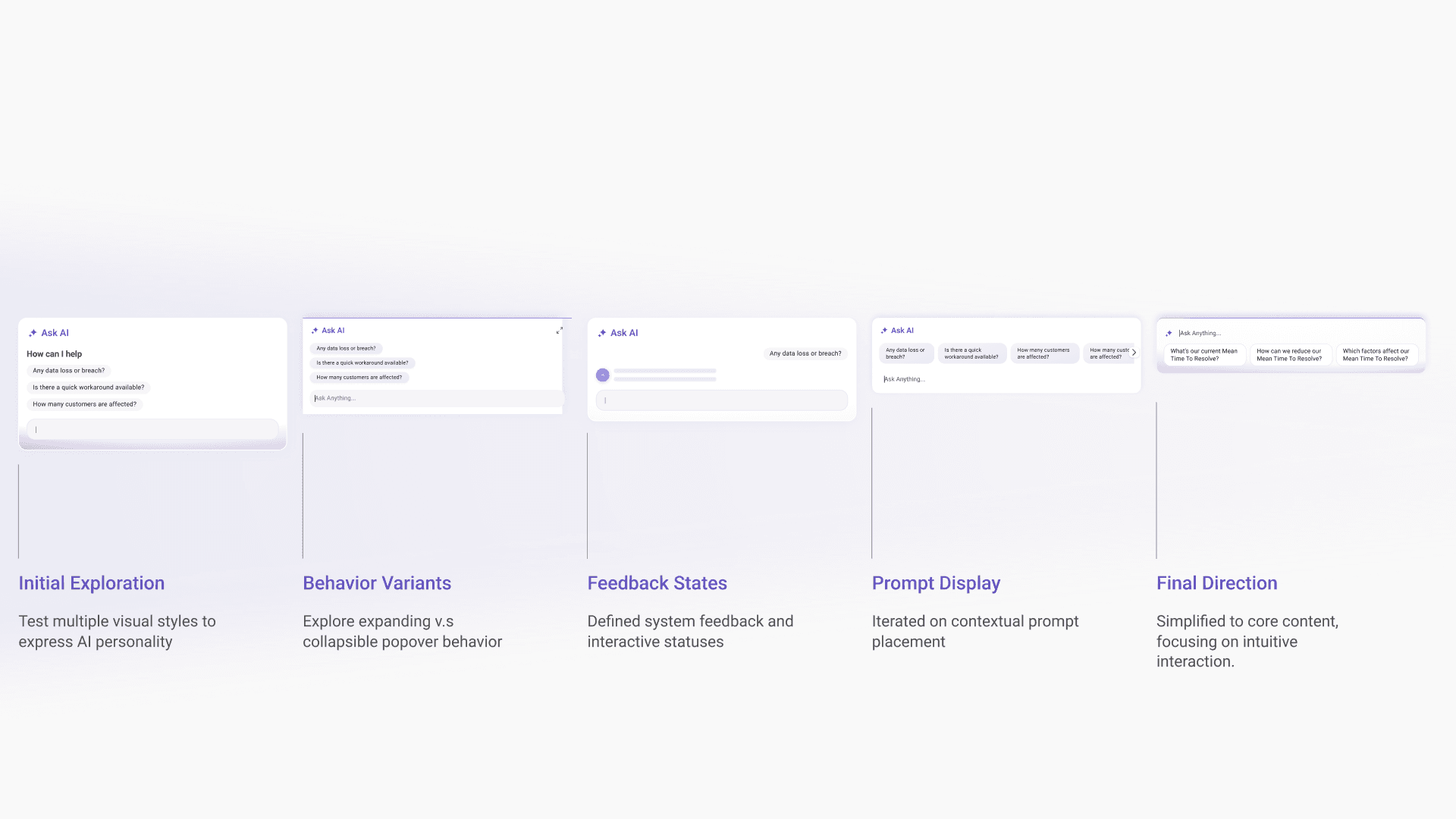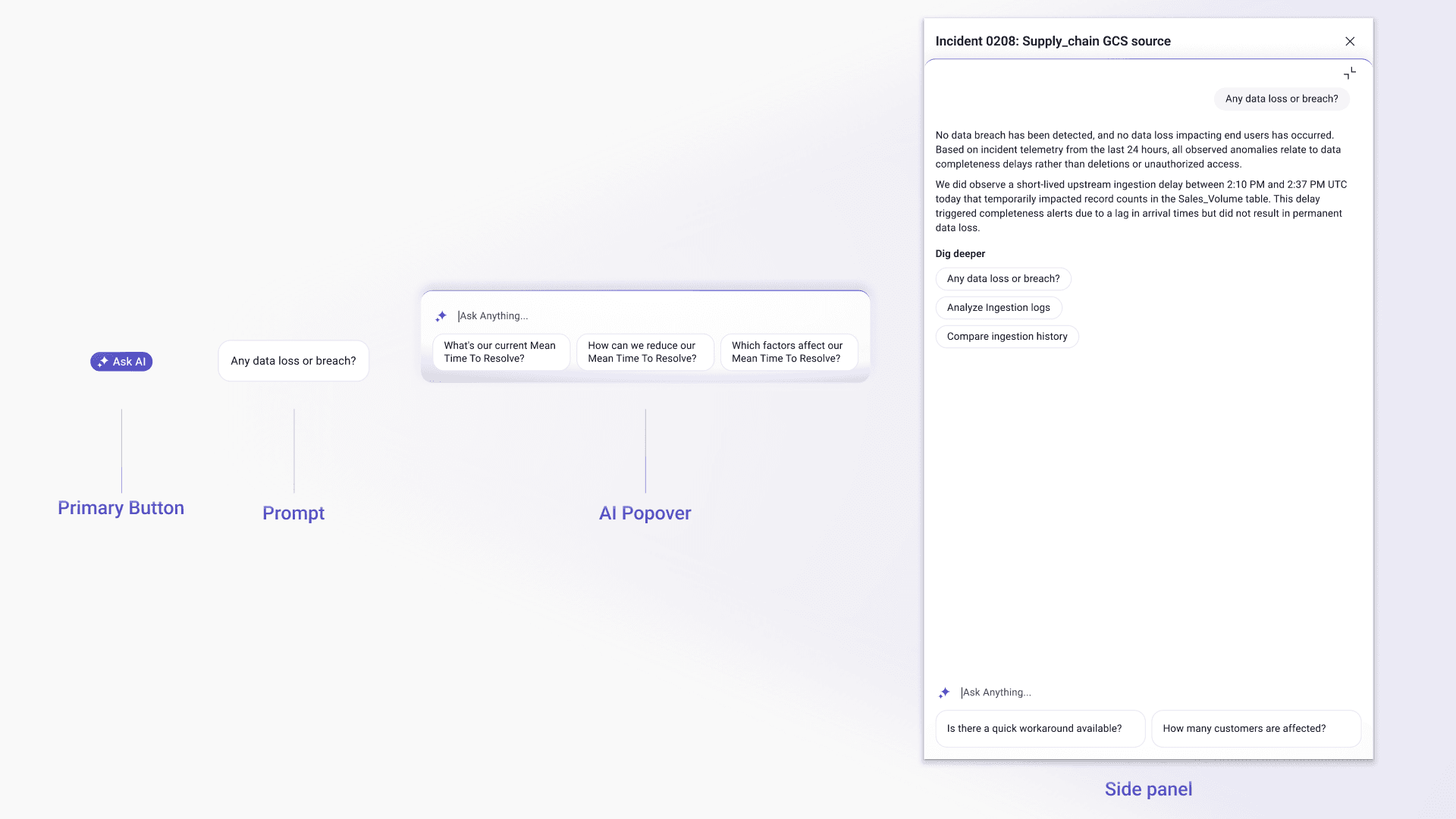AI for Observability
Designed AI-powered experiences for Actian’s Observability Platform, building scalable components to simplify workflows, improve trust, and establish a foundation for future development.
Project
Scalable AI UX patterns, AI components
My role
UX Designer
Timeline
June 2025 - Aug 2025 (12 Weeks)
Collaboration
Design Director, Senior Designer, UI engineering Team, AI Team
Project Context
Problem
Business Problem
Actian’s enterprise customers rely on the Observability Platform to monitor complex, distributed data systems. As environments scaled, teams increasingly struggled to diagnose issues quickly — slowing incident resolution, reducing reliability, and creating risks for customer satisfaction and renewals.
Pain points
Difficulty piecing together logs, metrics, and traces scattered across multiple pages
Slow root-cause identification without deep system expertise
High cognitive load during incident triage
Lack of clear guidance on what to investigate next
Reframed Problem
Before State
When I joined the project, the platform had no cohesive AI experience. Early concepts focused on a single “Ask AI” popover floating near the search bar—useful in theory, but isolated in practice. It didn’t scale across logs, incidents, or charts, and it pulled users away from their natural workflow.
Approach
To design an AI experience that truly supports troubleshooting, I followed a structured, insight-driven approach that moved from understanding the user → exploring possibilities → refining the system. Each step uncovered a new layer of the problem and informed the next design decision.
Target Users
Business Users
They want quick, actionable insights with minimal technical effort.
Data Scientists
They value accuracy and transparency when analyzing large datasets.
Data Stewards
They need clarity and consistency to maintain data quality and compliance.
By deeply understanding their goals, needs, and behaviors, we were able to uncover their pain points and translate them into actionable design opportunities.
Research & Insights
To design credible, intuitive AI interactions, I conducted a multi-layered research phase.
Competitive Analysis
I analyzed 12+ AI platforms (ChatGPT, Claude, Gemini, Perplexity, etc.) to identify:
How users initiate AI assistance
How platforms display context
Feedback mechanisms & micro-interactions
Transparency signals (e.g., source references, loading states)
Prompt-Based Testing
I sent identical prompts to multiple platforms to observe consistency, accuracy, and output clarity.
Key Insights
From research and testing, three themes emerged:
Gradient motion makes AI feel alive and credible
Micro-interactions provide reassurance and reduce uncertainty
Contextual prompts minimize cognitive load and improve workflow clarity
These insights shaped every design decision that followed.
Concept Development
With a clear understanding of the user and insights from research, I began mapping how AI should surface across the platform.
Wireframes — Interaction Skeleton
Started with low-fi wireframes to pinpoint where AI should surface and how it’s triggered, aligning the team early on scope and the three entry points.
Why: de-risk placement decisions, validate hypotheses fast with minimal cost, and prioritize high-frequency triggers with the highest impact/lowest integration effort.
User Journey Breakdown — Hi-Fi Flow Mapping
Mapped the AI journey in a hi-fi prototype to validate the end-to-end flow at production fidelity, identifying friction, setting the interaction hierarchy, and designing re-engagement paths so users can naturally re-enter AI.
Why: surface real-world failure modes early, streamline steps, and standardize patterns for reuse across the platform.
Design Evolution
The AI Popover
The Side Panel
Context-Aware AI System
Solution
Iterations
Key Components
As part of building a consistent and scalable AI experience, we developed a set of reusable AI components that could easily integrate into Actian’s existing design system. The goal was to create flexible modules that could adapt to different use cases across the Observability Platform and serve as a foundation for future AI features.
Final Design
Microinteractions
Subtle animations and gradient color transitions bring the AI to life. The flowing gradient — shifting between purple and blue — signals system activity and provides real-time feedback when AI is processing or loading. These microinteractions draw attention without distraction, making the experience more engaging, responsive, and trustworthy.
Contextual-Driven Prompts
Each prompt is generated based on the user’s current context — whether viewing a chart, exploring an incident, or selecting a data field. Instead of forcing users to start from scratch, the system suggests relevant follow-up questions or actions tied to what they are already looking at. This approach helps users stay in flow and reduces effort, making AI feel like a natural extension of the workflow.
Follow-Up Interaction
When a user selects specific content, a Follow-Up Button appears inline to encourage deeper exploration. Once clicked, the system highlights the related context with a small inline indicator, clearly showing what the follow-up refers to. This transparent linking between context and response helps users understand the relationship between their actions, the AI input, and the generated outcome.
Impact & Results
Quantitative
~20% faster onboarding
Measurable improvement in user confidence
Reduced manual steps in incident investigation
Qualitative
Teams praised the clarity and consistency
AI experience feels trustworthy and intuitive
Engineers found the design system easy to implement and extend
Strategic Impact
The final system established Actian’s AI UX foundation — a reusable architecture that future AI features can rely on.
Reflection
This project changed the way I think about AI and systems design. It taught me that:
Good AI design is invisible, it works because it feels natural.
You must design with engineering constraints, not around them.
Research isn’t just about data, it’s about discovering how people think.
Clarity is the most powerful tool a designer has.
Looking back, this internship was an incredible learning journey that helped me grow both as a designer and collaborator. I learned how to balance detail-oriented design work with big-picture thinking, adapt design trends into complex product environments, and communicate effectively acrosså teams. Working on AI experiences taught me the importance of designing for clarity and trust, especially in fast-evolving technologies. Most importantly, I gained confidence in turning research into practical, scalable design systems that make a real impact.
Enter Password
This page is protected. Please enter the password provided with my résumé.

